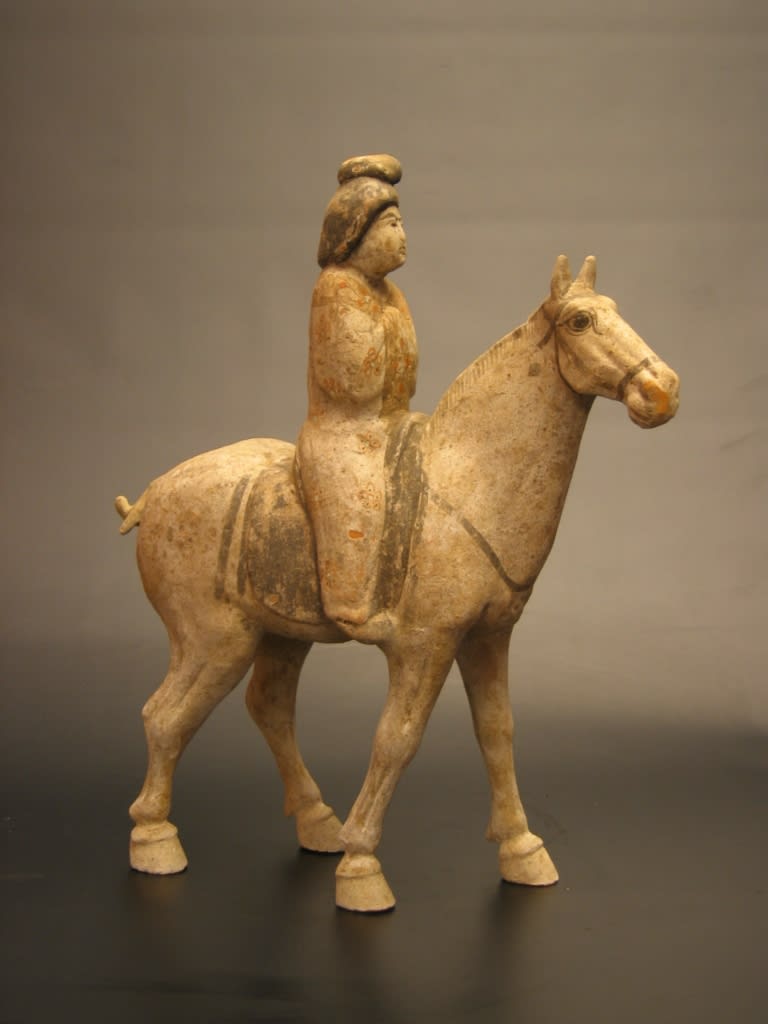Tang Polychrome Horse with Fat Lady, 618 CE - 907 CE
Terracotta
24 x 29 cm
9 1/2 x 11 3/8 in
9 1/2 x 11 3/8 in
DL.2092
During the Tang Dynasty, restrictions were placed on the number of objects that could be included in tombs, an amount determined by an individual's social rank. In spite of the...
During the Tang Dynasty, restrictions were placed on the number of objects that could be included in tombs, an amount determined by an individual's social rank. In spite of the limitations, a striking variety of tomb furnishings, known as mingqi, have been excavated. Entire retinues of ceramic figures - animals, entertainers, musicians, guardians - were buried with the dead in order to provide for the afterlife. Of the various types of mingqi, there is perhaps none more charming than the beautiful sculptures of elegant female courtiers, sometimes known as “Fat Ladies” for their fleshy faces. These gorgeous women reflect the appreciation of the female form during the Tang Dynasty. Such courtiers are described in the numerous love poems written during this era, considered a golden age of Chinese culture.
In this example, the lady-in-waiting is seated on a horse. Considerable traces of the original polychromy remain, in particular a dark pigment has been used to indicate the saddle and the reins. The status of the rider is indicated by the delicate floral motifs which adorn her long-sleeved dress. The border which frames the top of the costume and falls down over her clasped hands is adorned with delicate red dots. This stunning lady wears her hair in an elaborate coiffure arranged in a large bun that crowns her head. Such women may represent wives, princesses, or attendants. Their beauty inspires us as we are transported back to another time. This gorgeous sculpture has been to the next world and returned to our modern era to tell us her tale. She speaks of the enormous wealth and sophisticated culture of the Tang Dynasty, one of the greatest periods of artistic creation in human history.
In this example, the lady-in-waiting is seated on a horse. Considerable traces of the original polychromy remain, in particular a dark pigment has been used to indicate the saddle and the reins. The status of the rider is indicated by the delicate floral motifs which adorn her long-sleeved dress. The border which frames the top of the costume and falls down over her clasped hands is adorned with delicate red dots. This stunning lady wears her hair in an elaborate coiffure arranged in a large bun that crowns her head. Such women may represent wives, princesses, or attendants. Their beauty inspires us as we are transported back to another time. This gorgeous sculpture has been to the next world and returned to our modern era to tell us her tale. She speaks of the enormous wealth and sophisticated culture of the Tang Dynasty, one of the greatest periods of artistic creation in human history.



